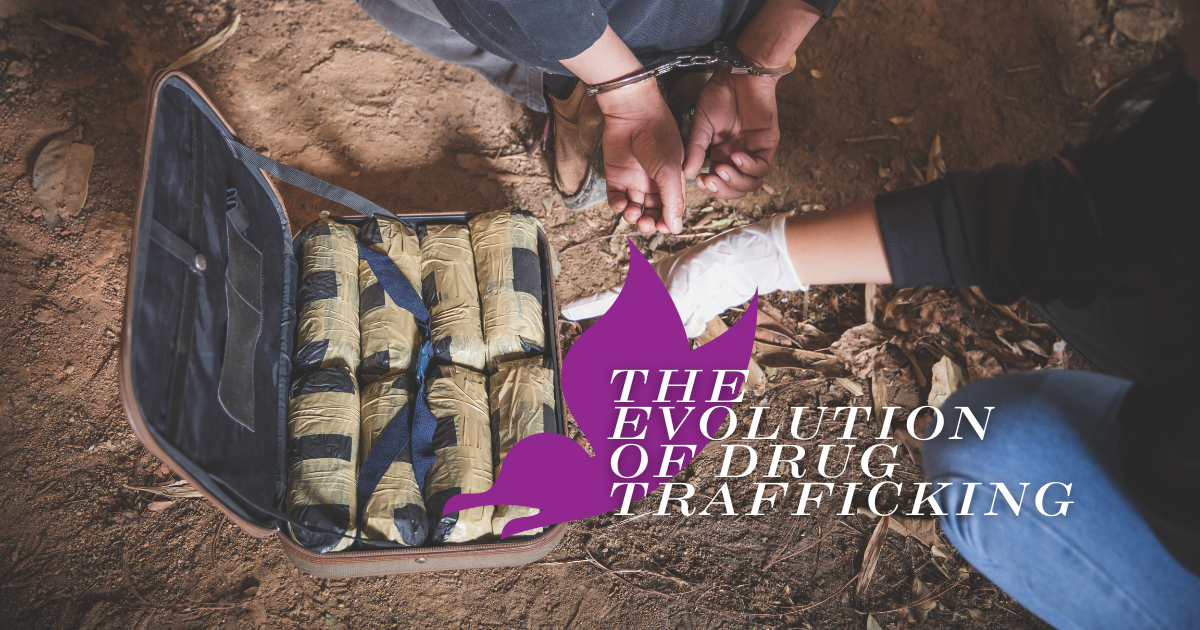This year, president Donald Trump signed into law the SUPPORT Act, a comprehensive bill designed to tackle the nations endemic opioid problem. Known officially as the Substance Use-Disorder Prevention that Promotes Opioid Recovery and Treatment for Patients and Communities Act, it was first introduced to the House of Representatives in June. It flew through the House and Senate in an uncharacteristic showing of mass bipartisan support.

The new piece of legislation funnels money through multiple grant programs to address the growing opioid crisis. Some of the major issues the the bill hopes to deal with include:
- Increased monitoring and detection of fentanyl and other synthetic opioids
- Preventing addiction for susceptible seniors
- Increase access to Medicaid funding for substance abuse treatment
- Help pregnant women and new mothers receive treatment for opioid use disorder
- Expanding oversight of opioid prescriptions and payment
- Raising awareness about the influence that synthetic drugs can have
- Increased data sharing in regards to opioid abuse
- Developing protocols to prevent overdoses in emergency rooms
- Crackdown on the counterfeit drug industry
- Combat opioid-related infectious diseases such as Hepatitis C
- Curtail illegal drug importation
While this is a step in the right direction for the nation, it will take more than just money to truly solve this crisis. Strategic business and cultural shifts need to take place to better address the crisis in a more effective way. For example, one minor method that has shifted the pendulum away from massive amounts of overdoses is the practice of informing doctors when one of their patients passed away from an overdose.
This study, first publicized in an issue of Science in August of 2018, showed that when researchers sent a letter informing clinicians of a patient who overdosed along with prescription guidelines for doling out opioids, they reduced their opioid prescription rate by 10%. It’s not a solution, but is a step towards reigning in the prescription opioid problem through a low cost intervention tool.
There are many different factors that play into how opioid addiction has taken a hold in the country, but through the combined efforts of lawmakers, business leaders, healthcare providers, and community activists, we can find solutions that support one another, stop patients from getting addicted, and ultimately help addicts get the treatment they need.
Reduce Opioid Prescriptions
Currently, the United States is the leading nation in the world when it comes to opioid prescriptions. Although we have just 4% of the world’s population, we account for roughly 27% of the world’s drug overdose deaths and over 3% of our population has misused an opioid painkiller at some point, more than twice the rate of any other country. We also consume roughly 30% of the world’s opioid supply.
While rates of prescriptions have been curved downwards since 2010, there still hasn’t been a significant change in overdose rates or in American’s reported levels of pain. Research even suggests that opioids may cause more harm than good in the long term, with people developing tolerance rather quickly and facing the negative health consequences of severe dependency. As pain relieving effects grow more diminished, the odds of addiction and overdose increase.
One comprehensive study on the long term effects of opioids on pain outcomes found that patients on these drugs did not have better pain outcomes than those who avoided opioids. The study lasted for over a year and followed individual patients closely, something that typical trials conducted by opioid manufacturers neglected to conduct.
Another study published in JAMA found that roughly 40 to 70% of opioid tablets given to surgical patients wind up going unused. Published in 2017, this study shows how lots of extra pills can wind up in the hands of friends and family members, whether through being sold, stolen, or given. Cutting back opioid prescriptions for surgical patients and other individuals who may wind up with unused pills is a first step towards reducing pill diversion.
Even now, lawmakers are passing legislative measures that put caps on the number of days that opioids can be prescribed for, limiting prescriptions to within certain time frames and requiring recurring face-to-face meetings in order to refill on prescriptions. My creating an extra hurdle to get opioids, this will hopefully cut down on excess medications and discourage individuals attempting to take advantage of opportunities.
Andrew Kolodny, an opioid policy expert at Brandeis University, believes that laws must tread a careful line when it comes to restricting prescriptions: “The idea is not to constrain decision making, but to make it a little harder for doctors to casually overprescribe.”
Don’t Cut Off Opioid Patients
Some of the highest risk individuals for opioid addiction are those who have just run out of prescription medication and those who still suffer from chronic or debilitating pain. This is why doctors should never abruptly cut off patients who are on opioids. These individuals would be left with crippling pain and withdrawal symptoms that may push them towards acquiring cheaper, illicit drugs.
Patients may not even be addicted a first. They may just be dependent on these opioids because they had been prescribed them for so long. In the case of addicts, the solution is straightforward: get them into treatment. But for the average patient who becomes dependent on these drugs, the line may not be so clear. They could even start turning to street drugs because they see it as continuing treatment for their pain.
Some low dose patients on opioids may be fine staying within their current prescription limits, but anyone given a high dosage is at risk for potentially dangerous consequences. That risk goes up when they are suddenly cut off from their supply. This is why tapering may be a safer and better option. According to Dr. Anna Lembke from Stanford Medicine however, doctors don’t have any experience with this part of treatment.
“We have to educate doctors about how to taper patients off of opioids,” says Lembke. “In medical school, we get a lot of education about how to start patients…but we don’t really get any training on how to take patients off.”
A forced taper may be difficult for a patient to undergo, but history has shown that it can ultimately be for the best. Lembke points out that patients usually report less pain after the period they have tapered off opioids, likely due to the fact they are no longer experiencing withdrawals but also because of diminished opioid-related hyperalgesia, where opioid use heightens the user’s sensitivity to pain.
Treating Pain Without Opioids
Limiting the amount of opioids on the market is one step towards improvement, but there have to be additional measures taken to replace the pain relieving effects that these opioids are good for. Without help from doctors and clinicians, patients may wind up just turning to illicit narcotics anyway to treat their pain, something that will only make America’s addiction crisis worse.
This is why any attempts at limiting opioid prescriptions should be accompanied by efforts to make alternative pain treatment methods more accessible. Possible solutions include physical therapy, acupuncture, chiropractic therapy, and even cannabinoid oil. Getting the right treatment to the right patient is the key.
One possible answer to the dilemma of responsible pain management and withdrawal could be neuromodulation, also known neurostimulation. This type of technology works by sending electrical currents that interrupt pain signals in the brain, effectively relieving pain. Nevro, a California based company, received FDA approval in 2015 for a high-frequency modulator that could be subdermally implanted to treat pain. In a two-year study of nearly 200 patients, results showed that the Nevro device was better at relieving back and leg pain than all external spinal cord stimulation devices.
Patients are able to try out the device in a non-intrusive format for one to two weeks before they decide to make the commitment. Cleveland-based SPR Therapeutics also produces a less intrusive, matchbook sized stimulator that can be worn on the arm or elsewhere on the body. In one study by the National Institutes of Health, the device showed a 72% reduction in pain for users. Another external device called the Neuro-Stim Bridge was approved by the FDA in 2017 for treating opioid addiction.
The problem is however, that individuals all respond differently to certain treatments and not every pain is equal. Work and life responsibilities also mean that simply popping a pill is usually the easiest method of treatment for ongoing pain. There’s also the reality that quickly writing a prescription is much easier than doing the research, having conversations, and performing ongoing medical evaluations to measure the efficacy of the treatment.
Some experts also advocate for educating on the public on how pain is simply a part of life. Excruciating pain is normal for traumatic injuries and requires help but not all pain is intolerable or needs to be pushed down with opioids right away. People should not be forced to deal with disabling or tormenting pain, but learning how to manage low levels may be the best option.
Better Mental Health Screening
Screening for substance abuse, suicidal ideation, and other mental health indicators is a critical step that healthcare systems and businesses can implement to begin saving lives. SAMHSA outlines a method called SBIRT (Screening, Brief Intervention, and Referral to Treatment) that has been linked to lower healthcare costs and lower rates of substance misuse. This tool should be adopted by more healthcare organizations to become a regular screening tool to help identify and assist those struggling with suicidal ideation or substance abuse problems.
Reducing Access to Lethal Means
One successful method for reducing access to lethal means (whether through medication or firearms) is the CALM approach (Counseling on Access to Lethal Means). One study on this approach in Colorado found that parents of children being treated for suicide risk made significant changes in behavior, increasing the percentage of medication and firearms safely stored by more than 50%. Schools, businesses, or state organizations could take it upon themselves to distribute information about this method.
Legalizing Marijuana
Evidence from multiple studies on marijuana legalization has pointed out a number of positive benefits. In states with medical marijuana access, overdose death rates are, on average, 25% lower than states with no legal access to marijuana. Legal access to medical marijuana has been associated with 23% reduction in opioid dependence and 15% fewer treatment admissions. Also, marijuana sales in Washington generated $315 million in tax revenues in the 2016-2017 fiscal year with 25% of tax revenue being given to substance use disorder treatment, education, and prevention.
Increasing MAT Awareness and Access
MAT or Medication Assisted Treatment is one of the National Principles of Care for Substance Abuse. However, it is still stigmatized as a band-aid solution that simply replaces one drug with another. A Blue Cross Blue Shield study found that while the rate of patients diagnosed with an opioid use disorder between 2010 and 2016 increased, the rate of those receiving MAT did not increase at a comparable rate. MAT deserves credibility as a viable and effective solution to curbing addiction. A comprehensive 2012 study on Methadone found that treatment of opioid abuse with MAT was associated with increased retention rates, reduced mortality, improved social function, and decreased drug use and improved quality of life.
Improving Pain Management & Treatment
While patients should not be made to suffer during their drug and alcohol recovery, it is vital that doctors administer painkillers in a responsible manner to ensure patients are not susceptible to developing a crippling addiction.
Harm Reduction through PDMPs
PDMPs (Prescription Drug Monitoring Programs) are a tool that states can use to successfully address prescription drug diversion and abuse. PDMP’s are databases that allow government entities to monitor the flow of drugs throughout a state to potentially identify patients who may be doctor shopping, doctors who may be over prescribing medications, and patients who could be being co-prescribed medications. Studies on states that implement PDMP’s show that they have reduced opioid prescription rates by 8% and opioid overdose deaths by 12%.
In Conclusion
This opioid crisis is affecting the country, killing thousands every year. At Landmark Recovery, we are focused on being a part of that solution. Landmark offers a path to sobriety through individualized care for those looking to escape the clutches of opioid abuse, or other substances. If you or a loved one is struggling with addiction, feel free to reach out to our admissions team to receive more information on how we can help with drug treatment and alcohol treatment.

Choose Recovery Over Addiction
We're here 24/7 to help you get the care you need to live life on your terms, without drugs or alcohol. Talk to our recovery specialists today and learn about our integrated treatment programs.



